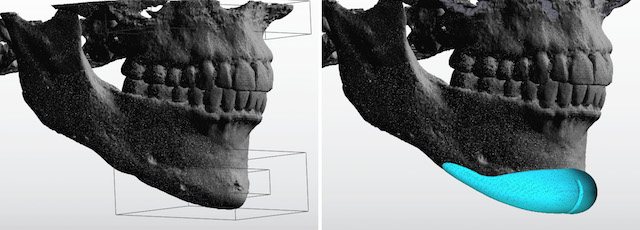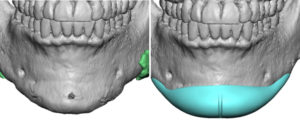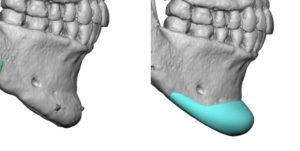Background: The sliding genioplasty procedure provides proven dimensional increases in chin projection. It does so by changing the shape of the chin. While it is commonly perceived that the chin bone is cut and moved to a new desired location, the chin bone no longer has its completely natural shape.
The most obvious change in the shape of the chin bone with a sliding genioplasty is the step-off created anteriorly. This changes the normal convex shape of the chin bone in profile to an L-shaped step. The bigger the horizontal advancement the more significant the length of the step becomes.
Less appreciated is what occurs out laterally at the end of the osteotomy cut. As the chin bone moves forward a separation occurs at the inferior border. In essence another step-off occurs bilaterally whose significance depends on how far the chin is brought forward. The more the chin is brought forward the greater this inverted V notch becomes. This notch may become visible externally which can also create a chin narrowing effect.
Treating these undesired shape changes of the chin after a sliding genioplasty is challenging. If there is also some deficient dimensional needs, a custom chin implant is the preferred treatment method.

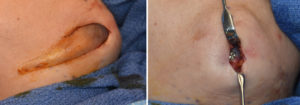
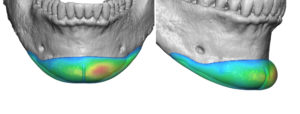
Case Highlights:
1) For sliding genioplasty to exert its effects, it must change the shape of the chin bone.
2) Some of the adverse effects of a sliding genioplasty are inadequate augmentation, notching of the inferior border at the end of the osteotomy cuts and loss of chin width.
3) Secondary correction of sliding genioplasty bone defects can be done by a custom chin implant design.
Dr. Barry Eppley
Indianapolis, Indiana

